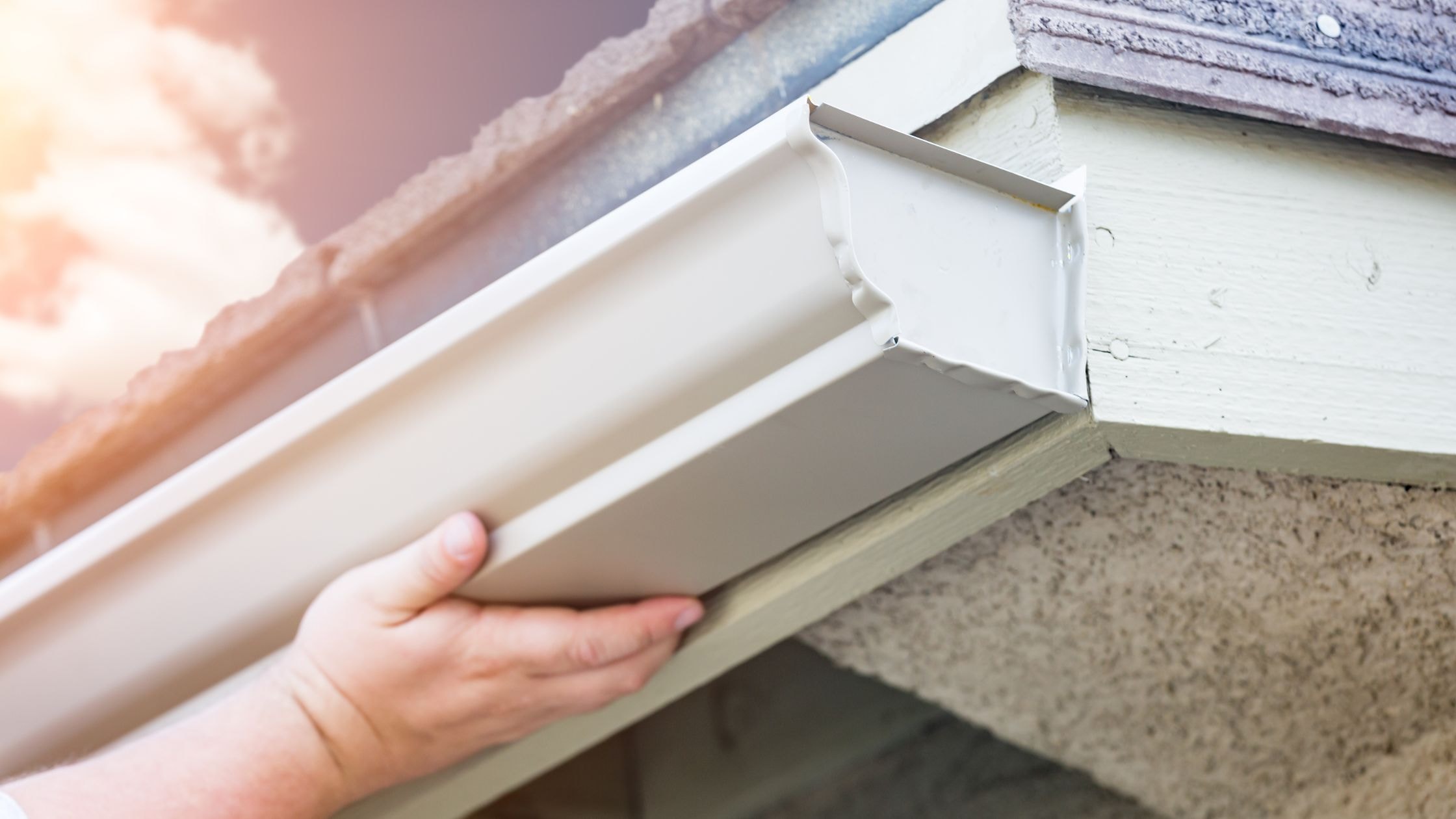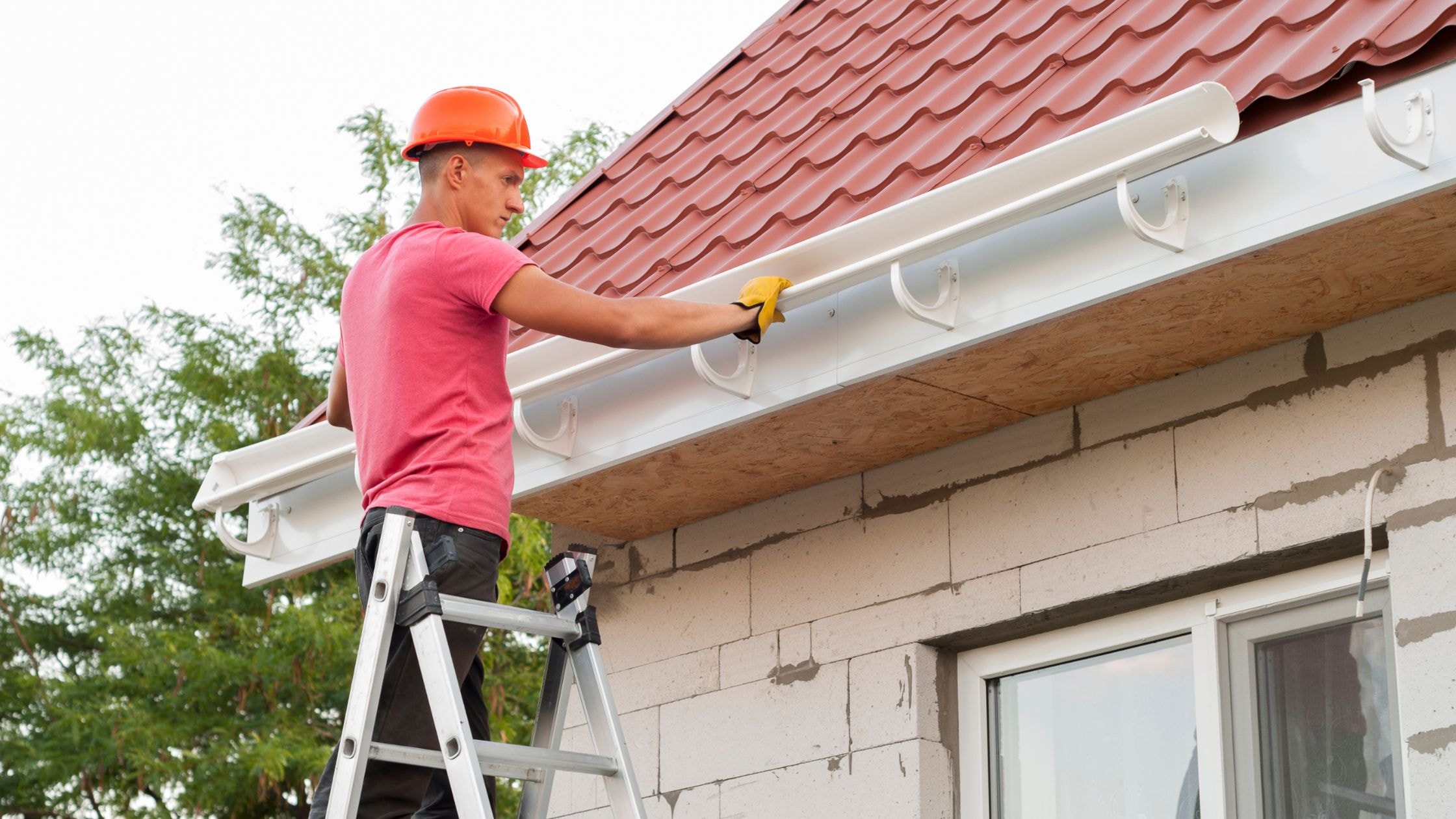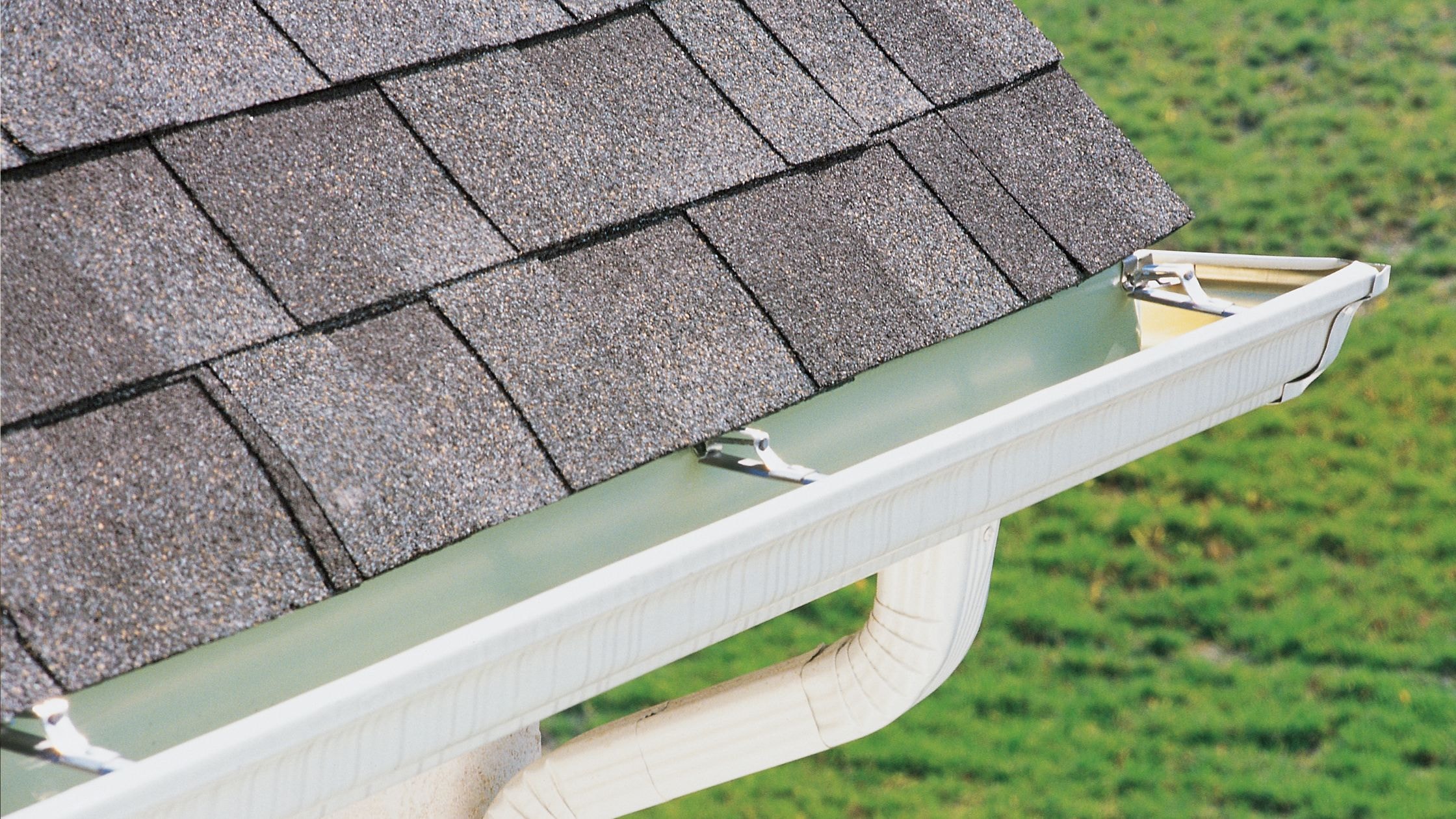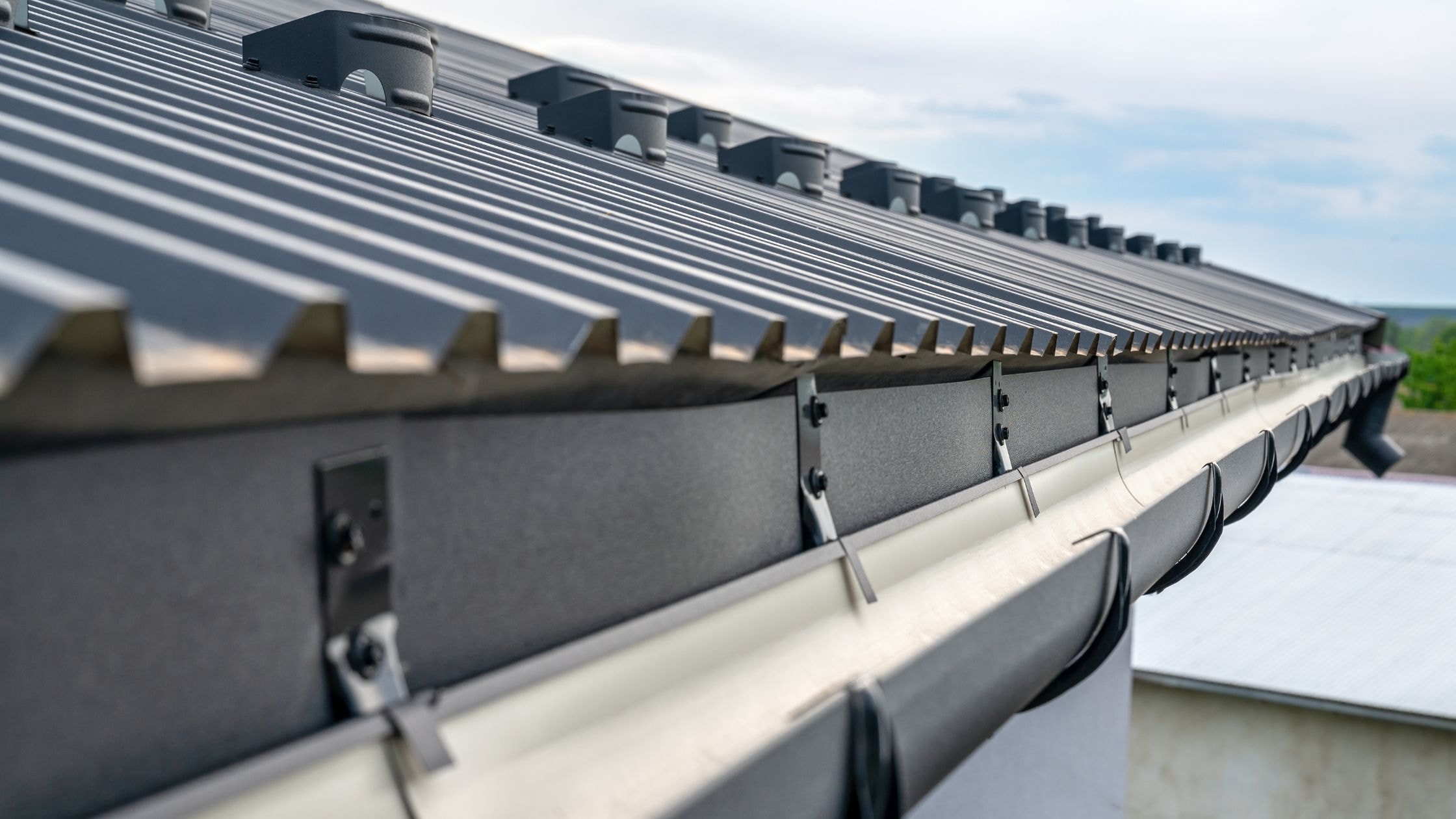
Properly measuring gutters is essential for maintaining your home’s drainage system. Whether you’re replacing existing gutters or installing new gutters, getting accurate measurements is critical to ensure you buy the right materials, maintain water flow, and prevent water damage. Here’s everything you need to know about how gutters are measured.
Understanding Gutter Measurements
Gutters come in various styles and sizes, such as K-style gutters, half-round gutters, and seamless gutters. Each style offers unique benefits, with K-style providing a modern look and half-round offering a classic appearance.
Accurate measurements ensure your gutter system will handle the appropriate volume of water, preventing overflow and fitting seamlessly along your roofline.
Factors like roof pitch and the overall square footage of your roof significantly impact the gutter size needed to manage water flow efficiently.
Using the right tools, such as a tape measure, level, and standoff attachment, makes a huge difference in ensuring gutter measurements are accurate.
Importance of Accurate Measurements
Precise measurements are key to purchasing the right materials, which helps you avoid overspending or underestimating the amount of material needed for your project.
Measuring gutters correctly ensures the gutter system is capable of handling the volume of water that flows off your roof during storms or heavy rainfall, protecting your home from water damage.
Incorrect measurements can result in gutters that are too small, leading to overflow, which can cause significant damage to your foundation and landscaping.
With accurate measurements, you can ensure your gutter system is positioned correctly, providing optimal drainage and extending the lifespan of your gutters.

Measuring Gutters
Measuring Existing Gutters for Repair or Replacement
Start by determining the style of the gutter system you currently have. Common styles include K-style and half-round gutters.
Use a measuring tape to measure the distance from the side that sits flush against your home’s fascia to the edge that extends past the roofline. This measurement will give you the gutter’s width.
Measure the height and diameter of each downspout and ensure you account for any angled extensions at the bottom of the downspout, which help guide water away from your home.
Don’t forget to measure the total length of your existing gutter runs, ensuring you capture the entire system, including any corner pieces or joints.
Measuring for New Gutter Installation
When installing new gutters, start by measuring the length of each roof section where gutters will be installed. Use a measuring tape to get accurate readings of the roof’s edge.
Calculate the square footage of each roof section by multiplying the length by the width. For example, if one section is 30 feet long and 15 feet wide, the square footage is 450 square feet.
Combine the roof square footage of all sections to get the total roof area, which will determine the overall size of the gutter system.
Use a level and a measuring tape to measure the roof’s pitch. Place the level horizontally on the roof and measure the vertical rise over a 12-inch horizontal run. The roof’s pitch factor is crucial in determining the volume of water the gutters will need to handle.
Measure the total length of each section to know how many linear feet of gutters you’ll need for your home.
Roof Pitch Factor and Its Impact on Gutter Size
Understanding Roof Pitch
The roof’s pitch (or slope) significantly impacts how much water your gutter system will need to manage. A steep roof sheds water faster than a shallow roof, meaning your gutters will need to handle higher water volumes during rainfall.
To measure the roof’s pitch, place a level horizontally along the roof and measure a straight, horizontal line extending out 12 inches. Next, measure the vertical distance from the roof surface to the level. This measurement helps you determine the roof pitch.
Converting Roof Pitch into a Multiplier
Once you have the roof pitch, it’s essential to convert it into a multiplier. This multiplier is used to adjust the roof square footage for the volume of water that will drain into the gutters.
Multiply the total roof square footage by the multiplier. This calculation will help you select the correct gutter size to ensure your gutters can handle the expected water flow during heavy rainfalls.
For example, if your roof pitch is steep, the multiplier may be higher, meaning you will need larger gutters to handle the water effectively.

Gutter Size and Capacity
Determining Ideal Gutter Width and Depth
Gutters come in a variety of widths and depths, but common options for residential gutters include 5-inch K-style gutters and 6-inch K-style gutters. The width and depth you choose will depend on your roof size, roof pitch, and the typical rainfall in your area.
Measure the width and depth of your existing gutters at multiple points to ensure consistent measurements. Inconsistent measurements could lead to gutters that don’t fit properly or fail to handle the water load.
Consider the maximum rainfall intensity for your region. In areas prone to heavy rainfall, it’s essential to opt for larger gutters that can handle the increased volume of water.
Calculating Total Linear Feet and Gutter Capacity
To calculate the total linear feet required for your gutters, measure the entire length of each roof section where gutters will be installed. This number gives you the total length of gutters needed for the installation.
Calculate the cross-sectional area of the gutters using their width and depth. This calculation helps determine how much water the gutters can hold.
Factor in the size and material of your downspouts when determining the gutter system’s capacity. Downspouts play a crucial role in directing water away from the home, so ensure they are appropriately sized to handle the water from the gutters.
If you have a large roof or live in an area prone to heavy rainfall, consider custom gutters that can handle a higher water capacity.
Safety Considerations
Safety Tips for Measuring Gutters
Safety is a priority when measuring or installing gutters. Always ensure your ladder is placed on a stable, flat surface before climbing. Using a stabilizer or standoff attachment can add an extra layer of security, preventing the ladder from damaging the gutters or the roof.
Wearing appropriate safety gear is essential. This includes work gloves to protect your hands from sharp edges, safety goggles to shield your eyes from debris, and nonslip shoes to maintain a good grip while working on the roof.
Avoid overreaching while on the ladder, as this can cause you to lose balance. Always keep yourself centered between the ladder rails and move the ladder as needed to avoid overextending.
Have a partner on the ground to help steady the ladder and assist with tools or measurements when necessary.

Choosing the Right Gutters
Selecting the Right Gutters for Your Home
When choosing residential gutters, consider options like K-style or half-round gutters, depending on your home’s architectural style. K-style gutters are more modern and can handle more water, while half-round gutters have a more traditional look but slightly lower capacity.
Seamless gutters are a popular choice for homeowners looking for a sleek, leak-resistant option. These gutters are custom-made to fit your roof, reducing the risk of leaks at the joints.
Installing gutter guards can help protect your gutters from debris like leaves and twigs, ensuring smooth water flow and reducing the need for frequent cleaning.
Gutter size is essential to handle the water volume from your roof. For larger roofs or regions with high rainfall, opt for 6-inch K-style gutters to ensure sufficient capacity.
Factors to Consider
Consider the roof pitch when selecting your gutters. A steeper roof will require gutters that can handle more water in less time.
Calculate the adjusted square footage of your roof to ensure your gutters are large enough to manage the volume of water from your roof’s entire drainage area.
Don’t forget to factor in the maximum rainfall intensity in your area. Choosing gutters that can handle the heaviest rainstorms will protect your home from potential water damage.
Final Steps: Installing Gutters
Before installing, double-check your measurements to ensure you have calculated the correct gutter size, total linear feet, and downspout capacity.
Consider using sectional gutters if you prefer a more flexible and affordable option. However, if you want a durable, long-lasting system, opt for seamless gutters, which are custom-made and reduce the risk of leaks.
Don’t forget to include components such as end caps, downspouts, and corner pieces in your total gutter system calculations.
Proper installation ensures your gutter system will effectively channel water away from your home, preventing damage to your foundation, walls, and landscaping.
Conclusion
Properly measuring your gutters is a crucial step in ensuring the longevity and efficiency of your gutter system. Accurate measurements help you avoid costly mistakes, protect your home from water damage, and ensure smooth drainage. From calculating roof pitch to determining the correct gutter size, understanding how to measure gutters accurately will set you up for success whether you’re installing new gutters or replacing existing gutters.
Facebook
